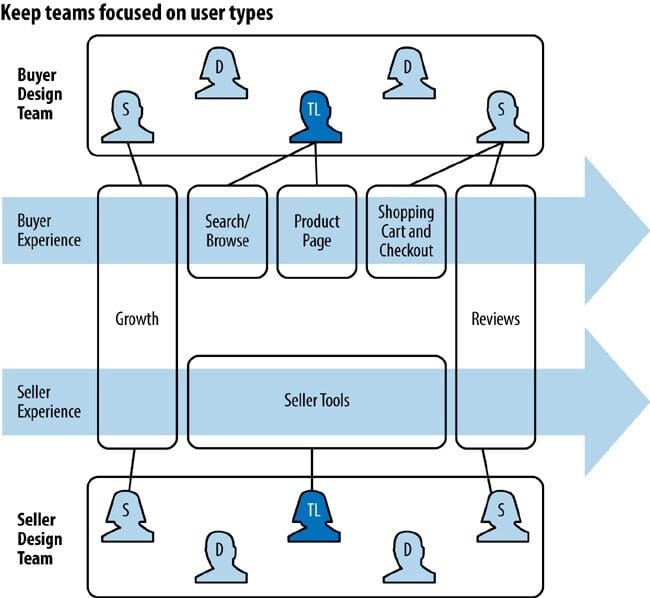- The Design Manager's Field Guide
- Posts
- Product Design and UX Beyond Agile Structures
Product Design and UX Beyond Agile Structures
Or How I Implemented a Centralized Partnership at a Fortune 500, Part I

Doing my annual re-read of Org Design for Design Orgs by Peter Merholz and Kristin Skinner, this quote popped out at me:
Often times product teams are established based on internal organizational structures that don’t always align with the customer experience. In some cases, a critical portion of a customer journey may be split across more than one product leader. Organizing product design teams one-to-one to established internal norms, then, can result in fragmented focus on the end user and, in the worst possible case, design strategy and execution that is contradictory and frustrating to customers.
Relatedly, the one designer to one product team model is a vestige of agile transformation that persists in the current golden era of digital and product mindset transformation. While often times effective, the practice ignores the complexites of design as a discipline and promotes sub-optimal outcomes. A single designer in today's prevailing product team model is expected to be an expert across as many as 12, potentially more, sub-disciplines: experience architecture, interaction design, generative research, evaluative research, general ethnography, visual design, front-end technologies, and more. When written out, the absurdity of the expectation is laid bare. Also, product teams will rarely require all skills all the time. So what to do?

From Org Design for Design Orgs — Centralized Partnership Model, 2018
Merholz suggests an organizational structure he calls the Centralized Partnership. Instead of building design teams that adhere strictly to existing structures, Merholz advocates for customer-focussed "journey design teams” (my language, not his) that staff for optimal product design skills coverage. These teams do not act on their own, though — that's where the "partnership" comes in. Design leads (or managers) act as the connective tissue between the journey design teams and the product teams, and are responsible for assigning the right designers with the right skills to the right problems at the right times. The approach allows for more design flexibility while retaining focus on the end-to-end customer journey. If a critical experience is split across product leaders and teams, the centralized partnership approach can help overcome internal barriers for greater customer and business outcomes.
Sounds great but impractical to implement? I get it, I've been there. In my next post I will outline the pitfalls, gotchas, realities, and successes I experienced leading the change to Centralized Partnership at a Fortune 500 company. I promise it’s possible and worth the effort.
Product Design and UX Beyond Agile Structures Series
Product Design and UX Beyond Agile Structures: Or How I Implemented a Centralized Partnership at a Fortune 500
We Aren’t Unicorns: Design Skillset Coverage and the Centralized Partnership
Getting Aligned: The Contracts of the Centralized Partnership